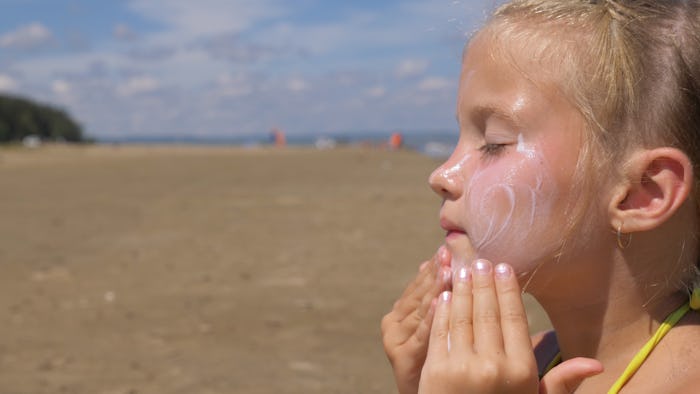News

If You're Terrified Of Skin Cancer, You're Probably Doing Something Right
As much as I look forward to the end of the school year and the change of pace that comes with summer break, I equally dread one thing in particular: sunscreen. Not that I don't appreciate the protection it offers from harmful UV rays. It's just with four kids, it's difficult to make sure all of them are adequately sprayed down, rubbed in, and re-applied when we're outside for extended periods of time. As much of a hassle as it can be, we use sun block very meticulously in our family — mostly because I'm so paranoid about skin cancer. Well as it turns out, if you're terrified of skin cancer, you're probably doing something right.
First off, let me just mention that according to the Centers for Disease Control and Prevention (CDC,) skin cancer is the most common type of cancer in the U.S. So it's definitely no joke — and something people should be checking themselves regularly for.
Which is probably why professors from BYU and the University of Utah recently teamed up for a study, published in the Journal of Behavioral Science, that looked for the most effective ways to influence people to screen themselves for cancer.
Researchers studied a group of over 2,200 adults ranging in age from 18 to 89 from across the nation, according to The Science Times. What they found was that visual stimulation had a significant impact on participants. Specifically, visuals of UV skin damage caused participants to feel fear, which then made them more likely to engage in sun-safe practices — like using sunscreen or wearing protective clothing.
"Just talking about skin cancer, being inundated with facts and mortality rates, all of that is fear-inspiring language, but the images were so powerful that they moved people to intend to take action," said study co-author Kevin John, according to Science Daily.
In order to come to this conclusion, researchers tested out a total of 60 different methods — including showing participants stock photos of other people in the sun, showing them facts, showing photos of areas where moles had been removed, and more, according to Science Daily. Researchers were also able to use a VISIA UV complexion analysis system to take images of skin damage from members of the research team. And although many of their faces didn't show outward signs of skin cancer, the UV photos were able to show existing damage that's normally invisible to the naked eye. In a news release, John explained:
The UV photos, and one particular image of a mole being removed, were the most effective in terms of influencing someone to change their behavior. This tells us these are the types of images we need to use to convince people to screen themselves for cancer. Over time, we hope this will cause mortality rates to drop.
Sunsafe behaviors have been shown to reduce photoaging and protect against skin cancers, with some of the most positive research focusing on middle-aged populations (like the under-55 set studied for four years by researchers from the Queensland Institute of Medical Research, and published in the Annals of Internal Medicine). Motivating the public to change their behavior can be difficult, if very worthwhile.
Only 25 percent of damage is done by the time you are an adult, Dr. Elizabeth Hale told Romper previously, "so it's not too late to make a difference."
In addition to wearing sunscreen and sun-protective clothing, Harvard Medical School recommends skin checks, in which you look for any moles or sores that:
- are asymmetrical
- have an irregular border
- have changed in color or contain more than one color
- are larger than 1/4 inch in diameter (about the size of a pencil eraser)
- are raised or have an uneven surface.
I've aways been baffled about why so many people continue to shun sun screen or purposefully sun bathe, while others of us hide from the sun and diligently check our own skin. But, as evident by this study, it all comes down to fear. Because apparently percentages and statistics aren't nearly as scary as being able to literally see skin damage in a new way.